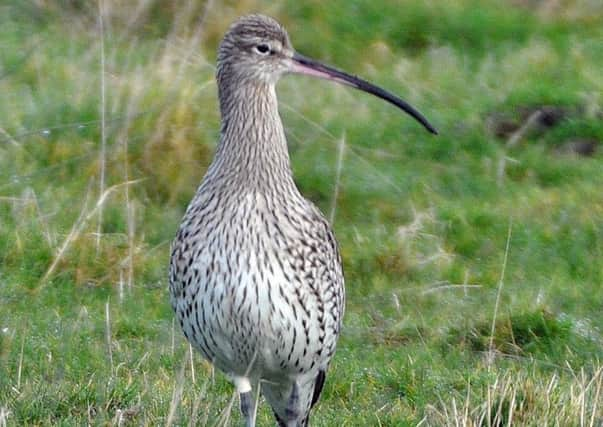Dr Adam Smith: Grouse moors can play a big part in saving the threatened curlew


We have a crucial role to play in curlew conservation because the UK accounts for around one fifth of the global population in the winter, and around one quarter of all breeding pairs in spring and summer, so what we do in the UK will have a major impact on the survival of this species.
It was added to the UK Red List at the end of 2015, the list that basically flags up a significant risk of species extinction.
Advertisement
Hide AdAdvertisement
Hide AdBut many will be familiar with the cry of the curlew, and would regard it as a familiar bird both across our farmlands, uplands and estuaries and mudflats where it overwinters in flocks that can number into the thousands. So it’s important that we wake up to this crisis.
It is also important to note that, in terms of UK numbers, the decline is more marked in lowland areas south of Birmingham.
For the southern curlew it is estimated that only around 250 - 300 breeding pairs remain, meaning that if nothing changes then these birds will be gone in eight years. But what is causing this decline across the whole country? A great deal of research has been carried out to try to establish why this popular bird is in such dire straits, and the most important conclusion is that low breeding success is responsible.
While other factors such as loss and fragmentation of breeding habitat, urbanisation, afforestation, human disturbance, changes to wetland habitat and nest destruction due to agricultural factors have also played a part, low breeding success, rather than reduced adult survival, is the main cause.
This, in addition to habitat pressures, stacks the odds against the curlew. Increased predation is the main threat to breeding success, and one study has shown that more than 70 per cent of curlew nests (between 1996 and 2006) did not result in the hatching of a single chick.
Of those that do survive only half make it to fledging – the ability to fly – foxes and crows being the main culprits in terms of taking a significant number of those chicks that did hatch. Adjusting farming practices may still provide a lifeline to those curlew that use lowland nesting sites, but to conserve the species we must also protect the vast majority that breed in our uplands.
Research undertaken by the Game & Wildlife Conservation Trust (GWCT) has established that curlew thrive on grouse moors.
We used this work to predict what might happen with and without gamekeepers killing foxes and crows over the next five years.
Advertisement
Hide AdAdvertisement
Hide AdOur predictions show that with gamekeepers the curlew population increases by 93 per cent and without them it falls by 6 per cent.
So a clear strategy would seem to be evident. Whilst the national decline may have originally been driven by habitat loss, we know that active keepering in places where curlew are known to breed successfully, including grouse moors, is a vital component in preserving remaining breeding habitat and protecting young curlew from foxes and crows.
GWCT is keen to track information about curlews from farmers and land managers, and we have an Action for Curlew campaign running on our website where we are gathering information about nest locations.
In Scotland specifically, we are running a programme of wader count training days for land managers as the more information that we have then the better we can understand how to provide local solutions.
We also have a free Conserve the Curlew booklet available from our website here. www.gwct.org.uk/action-for-curlew. If we act now, and act positively and decisively, we may just be in time – but the clock for the survival of the curlew in the UK is certainly ticking.
Dr Adam Smith, director, Scotland, Game & Wildlife Conservation Trust.